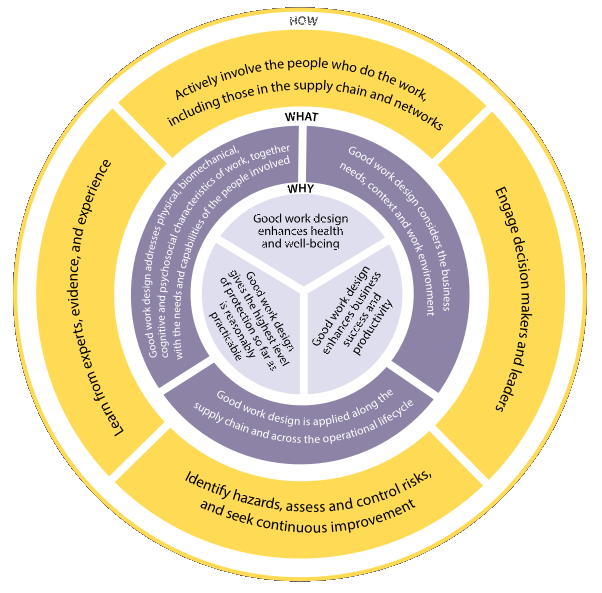Meeting WHS Responsibilities through Workplace Design
Workplace design is important to all workplaces, benefiting the business, workers and clients. The benefits of following good work design principles include protecting workers from harm to their health & safety, improving worker health and well-being and improving job satisfaction and performance. Which can lead to improved business success through higher worker productivity and innovation. Good work design also helps to eliminate and minimise hazards and risks at the source.
Workplace Design Consideration

Source: Safe Work Australia, March 2020
When considering workplace design, there are four areas of concern:
- The work, how to perform it and the physical, mental and emotional demands of the tasks and activities. As well as the task duration, frequency and complexity.
- Your workers’ needs, preferences and capacities.
- The physical environment, including the workplace itself, plant, equipment, materials, substances and vehicles, buildings and structures.
- The systems and processes involved in the work, including information technology, business management, products and services, supply chains and human interaction, including customers and clients.
Work Design Principles
There are 10 principles of good work design that support both workplace health and safety and business productivity, which are relevant for all workplaces. They fall under three key areas:
- Good work design enhances health and wellbeing
- Good work design enhances business success and productivity
- Good work design gives the highest level of protection
- Good work design considers the business’s needs, context and work environment
- Good work design addresses the physical, biomechanical, cognitive and psychosocial characteristics of work, together with the needs and capabilities of the people involved
- Good work design is applied along the supply chain and across the operational lifestyle
- Actively involve the people who do the work, including those in the supply chain and networks
- Engage decision-makers and leaders
- Identify hazards, assess and control risks, and seek continuous improvement
- Learn from experts, evidence and experience
Why good work design is important
What to consider in good work design

Source: Safe Work Australia, March 2020
How to design good work
For a more thorough investigation on best practices of WHS within the workplace, our online platform Leading Safety Training offers WHS Due Diligence for CEOs, Directors and Managers, designed to help PCBU’s better understand their duties when it comes to WHS compliance.
